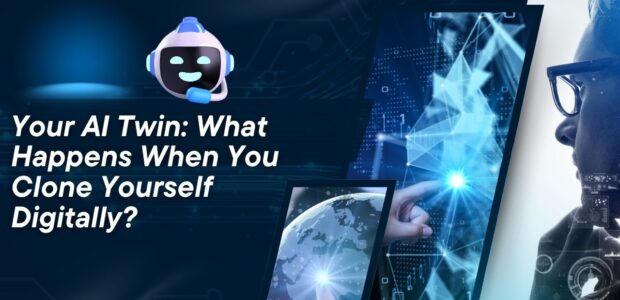Your AI Twin: What Happens When You Clone Yourself Digitally?
Imagine a version of you that never sleeps, always remembers, and can answer emails, write content, manage your calendar, or even hold a conversation—just like you. In 2025, this is no longer science fiction. Welcome to the world of AI twins—digital clones of your mind, style, voice, and routines.
But what really happens when you duplicate yourself with artificial intelligence? What are the benefits, the risks, and the boundaries between “you” and your machine-made double?
This blog dives deep into what it means to create an AI version of yourself, how it’s being used, and what this evolution could mean for work, relationships, and even legacy.
🤖 What Is an AI Twin?
An AI twin is a highly personalised digital assistant built using your:
-
Voice (via voice cloning)
-
Writing style
-
Personal data (emails, messages, preferences)
-
Behavioural patterns and decisions
-
Schedule, goals, and thought processes
It’s not just a chatbot—it’s a replica of your mind and communication style, powered by advanced language models like GPT-4.5 and tools such as:
-
Synthesia, ElevenLabs (voice/video)
-
Lifelike AI, Character.AI (personality training)
-
Replika Pro (emotion-based simulation)
-
Custom GPTs or personal AI agents
🔍 How People Are Using AI Clones in 2025
👨💻 1. Delegating Work
-
Your AI twin writes blog posts, replies to messages, and pitches clients—all in your tone.
-
Coaches, creators, and entrepreneurs use AI clones to scale themselves, handling repetitive tasks without losing the personal touch.
🧠 2. Personal Decision-Making
-
Your AI twin knows your priorities, values, and style—and offers advice just as you would.
-
It can simulate how you’d approach a financial decision, personal dilemma, or creative idea.
🎥 3. Content Creation
-
Your AI avatar can appear in videos, podcasts, or interactive content.
-
Many creators now record once and let their AI twin create 100 versions in different languages or formats.
💬 4. Customer Interaction
-
Brands now use AI versions of founders or influencers to answer DMs, give product recommendations, or greet customers.
-
AI twins are becoming ambassadors that scale authenticity.
🧓 5. Digital Legacy
-
Families are creating AI versions of loved ones to preserve voice, wisdom, and stories.
-
Think of it as emotional archiving—an interactive memory that lives on.
🧩 What It Takes to Build Your AI Twin
To create a realistic AI twin, you need:
-
Data: Emails, notes, social media posts, and voice samples
-
Consent & boundaries: What should it know, say, or never do?
-
Training time: AI must learn your tone, humour, preferences, and logic
-
A platform: Whether via a custom GPT, a private LLM, or a no-code AI app builder
Tools like Personal AI, Kindly AI, or PrivateGPT now offer plug-and-play options.
⚖️ The Big Questions: Risks & Ethics
🧠 Identity Confusion
If an AI can speak like you, who controls what it says? Could people be misled?
🔒 Privacy & Consent
Your twin is trained on personal data—raising major concerns over leaks or misuse.
📉 Authenticity Fatigue
Will people stop valuing real interaction if everyone has a digital double?
⚰️ Posthumous Use
Some families are cloning deceased relatives for comfort. But should we be able to speak to the dead via AI?
🔮 The Future of AI Twins
By 2030, we could see:
-
AI assistants that age with you, learning and evolving alongside your experiences
-
Clone marketplaces, where celebrities license out AI versions for fan interaction
-
AI job applicants, where your twin represents you in interviews or negotiations
-
Neural sync, where your AI twin auto-updates from your brain activity and biometric feedback
Eventually, your AI twin might not just help you manage your life—it could be your life in the digital world.
💬 Final Thoughts
Creating an AI twin is one of the most futuristic, personal—and controversial—things you can do in 2025. For some, it’s a game-changer. For others, it’s a line too far. But one thing is clear:
You might be one of one in real life—but online, you can be everywhere at once.
Are you ready to meet your second self?


